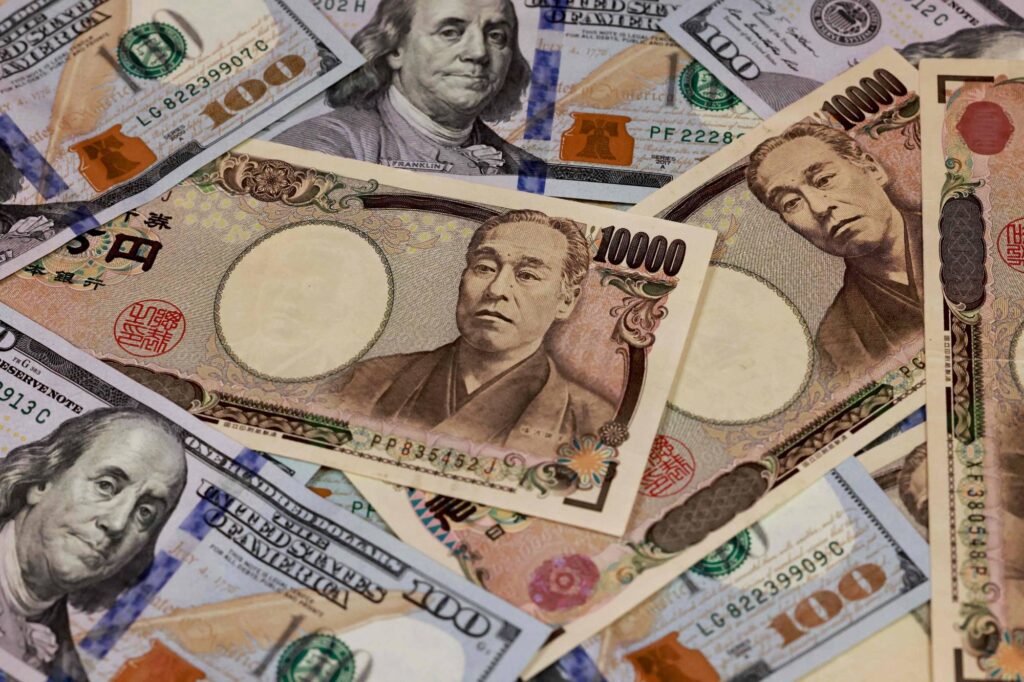The Japanese Yen has been in the spotlight recently as it made a remarkable rebound from an 11-month low against the US Dollar. This resurgence has raised questions and curiosity among investors and financial experts. In this comprehensive article, we will delve into the details of this intriguing development, shedding light on the factors behind the Japanese Yen’s recovery and its potential implications for the global economy.
1. Japanese Yen Understanding the Yen’s Recent Struggles
The Japanese Yen faced a challenging period as it hit an 11-month low against the US Dollar. The primary trigger for this decline was the Federal Reserve’s strong hints regarding another interest rate hike this year. This announcement had a bullish impact on US treasury yields, elevating the Dollar’s position against its competitors.
The Yen’s woes were compounded by the Bank of Japan’s decision to maintain record-low interest rates while pledging to support the economy until inflation reaches 2%. This commitment signaled the central bank’s reluctance to unwind its ultra-easy monetary policies, placing additional pressure on the Yen.
2. USD/JPY Hits a 10-Month High
USD/JPY, the currency pair representing the US Dollar and Japanese Yen, recently reached a significant milestone. It last traded at 148.97, the highest level seen since October 2022. This surge brings the Yen dangerously close to the 150 mark, a threshold at which Japanese authorities may directly intervene to strengthen their currency.
3. Policy Gap and Its Impact
One of the critical factors contributing to the Yen’s struggles is the widening policy gap between US treasury yields and Japanese government yields. The gap in 10-year government bonds between the two countries surged to 382 basis points on Monday. This substantial difference in yields has created an environment favoring the US Dollar and placing downward pressure on the Yen.
4. The Implications of Yen’s Rebound
The Japanese Yen’s rebound carries significant implications for the global economy. It indicates that currency markets are sensitive to central bank policies, interest rate differentials, and economic outlooks. Investors should closely monitor these developments, as they can impact international trade, investment decisions, and currency exchange rates.
5. FAQs (Frequently Asked Questions)
What caused the Japanese Yen to hit an 11-month low?
The Japanese Yen’s decline was primarily triggered by strong hints from the Federal Reserve about another interest rate hike, which boosted US treasury yields and strengthened the Dollar.
Why did the Bank of Japan maintain record-low interest rates?
The Bank of Japan decided to keep interest rates at record lows to continue supporting the economy until inflation reaches 2%. This policy is aimed at stimulating economic growth.
What is the significance of USD/JPY hitting a 10-month high?
The USD/JPY currency pair’s ascent to a 10-month high suggests a strengthening US Dollar and increased pressure on the Japanese Yen.
How does the policy gap affect the Yen?
The widening policy gap, with higher US treasury yields compared to Japanese government yields
puts downward pressure on the Yen, making it less attractive to investors.
What are the global implications of the Yen’s rebound?
The Yen’s rebound highlights the importance of central bank policies and interest rate differentials in currency markets
influencing international trade and investment decisions.
Could Japanese authorities intervene if the Yen nears 150 against the Dollar?
Yes, Japanese authorities might directly intervene in the currency market if the Yen gets dangerously close to 150 against the US Dollar.
Conclusion
The Japanese Yen’s recent rebound from an 11-month low against the US Dollar is a complex and significant development in the world of finance. Understanding the factors driving this resurgence and its global implications is crucial for investors and those interested in international economics. As the Yen continues to navigate uncertain waters
staying informed about central bank policies and market dynamics is key to making informed financial decisions.

